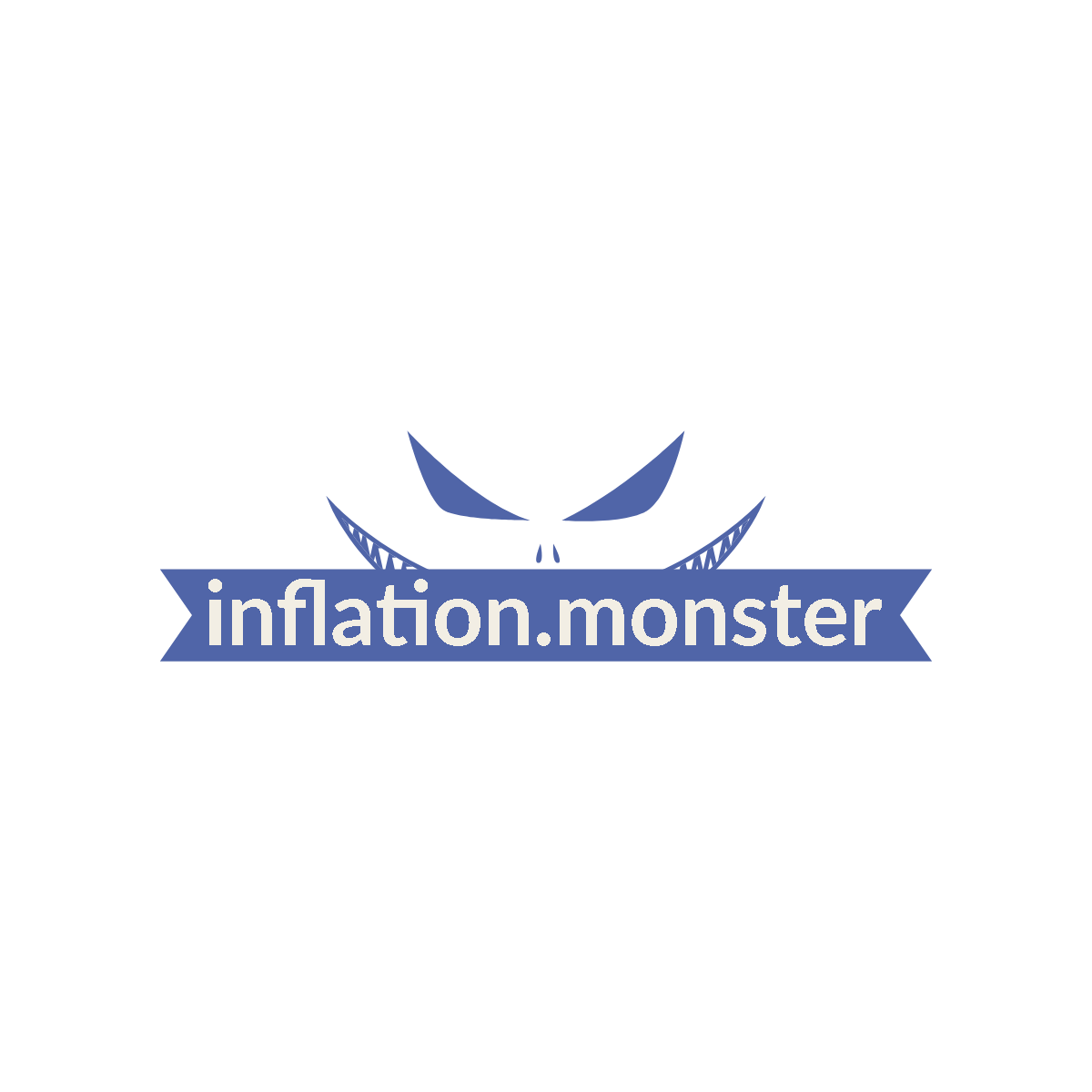Inflationary pressures are beginning to mount and have the potential to significantly impact global economies. As the inflation monster rears its head, it becomes crucial to unravel the mysteries behind this phenomenon and understand its implications. At Inflation.Monster, we strive to equip individuals with the knowledge and insights necessary to navigate the complex world of inflation. Join us as we delve into the realm of hard money, inflation, and the formidable challenges it poses to economies worldwide. Through our exploration, we aim to provide a comprehensive understanding of the inflationary pressures facing global economies today.

Causes of Inflationary Pressures
Inflation refers to the general increase in prices of goods and services over time. There are various factors that can contribute to inflationary pressures, and understanding these causes is crucial in formulating appropriate policies and strategies to manage inflation effectively.
Demand-Pull Inflation
One of the main causes of inflationary pressures is demand-pull inflation. This occurs when the demand for goods and services exceeds the available supply, leading to upward pressure on prices. When consumers have more disposable income, they tend to spend more, creating higher demand. As a result, businesses may raise their prices to capitalize on this increased demand, leading to inflation.
Cost-Push Inflation
Another significant cause of inflationary pressures is cost-push inflation. This occurs when the cost of production inputs, such as labor and raw materials, increases. When businesses face higher production costs, they often pass on these additional expenses to consumers through higher prices. This can trigger a chain reaction, as increased prices for inputs can lead to higher wages and further price increases throughout the economy.
Monetary Inflation
Monetary inflation, also known as inflation through an expansion of the money supply, is another factor contributing to inflationary pressures. When a central bank increases the money supply, it can cause an excess of money in circulation. This excess liquidity can drive up the demand for goods and services, leading to inflation as businesses respond by raising prices to meet the increased demand.
Impact of Inflationary Pressures
Inflationary pressures can have wide-ranging impacts on economies and individuals, causing both short-term and long-term consequences. It is important to understand these impacts to develop strategies for mitigating the negative effects of inflation.
Reduced Purchasing Power
One of the most immediate and noticeable impacts of inflation is the reduction in purchasing power. As prices for goods and services rise, each unit of currency can buy a smaller amount. This means that individuals and households need to spend more money to maintain the same standard of living, eroding their purchasing power and potentially leading to a decrease in overall consumption.
Wealth Redistribution
Inflation can also lead to wealth redistribution within an economy. As prices rise, individuals who own assets with fixed values, such as savings accounts or fixed-income securities, may see the real value of their wealth decrease. On the other hand, individuals and businesses with assets that can appreciate in value, such as real estate or stocks, may benefit from inflation as the value of these assets increase. This unequal redistribution of wealth can exacerbate income inequality within a society.
Uncertainty and Risk
Inflation can introduce uncertainty and risk into the economy, making financial planning and investment decisions more challenging. Businesses may find it difficult to accurately forecast costs and set prices, as they need to navigate the unpredictable effects of inflation on their inputs and sales. Similarly, investors may face challenges in determining the appropriate allocation of their assets, as inflation can erode the value of fixed-income investments and increase the attractiveness of inflation-protected assets.

Global Inflationary Trends
Inflationary pressures are not limited to individual economies but can also be observed at a global level. Understanding these global trends is crucial for policymakers and businesses to anticipate and respond effectively to changes in the international economic landscape.
Developed Economies
In developed economies, inflationary trends are often influenced by factors such as domestic demand, labor market conditions, and monetary policy. Higher demand levels and tight labor markets can lead to increased wages, which can then translate into higher prices for goods and services. Conversely, in periods of economic downturn or low demand, inflationary pressures may be subdued.
Emerging Economies
Emerging economies often face unique challenges when it comes to managing inflation. Factors such as rapid economic growth, increasing wages, and expanding middle classes can lead to higher demand and potential inflationary pressures. Additionally, emerging economies may be more susceptible to external shocks, such as fluctuations in commodity prices or changes in global financial conditions, which can impact inflation rates.
Global Commodity Prices
Commodity prices, including those of energy and food, can significantly influence global inflationary pressures. Increases in commodity prices can lead to higher production costs, which can then be passed on to consumers in the form of higher prices. For example, rising fuel prices can impact transportation costs, affecting the prices of goods and services throughout the supply chain. Similarly, changes in food prices can impact the cost of living and overall inflation rates.
Central Bank Policies
Central banks play a crucial role in managing inflation and stabilizing economies. Through their monetary policy decisions, central banks aim to control inflation, promote economic growth, and maintain price stability. Understanding the tools and strategies used by central banks is essential in comprehending their impact on inflationary pressures.
Monetary Policy Tools
Central banks utilize various tools to manage inflation. These tools include open market operations, reserve requirements, and the discount rate. Open market operations involve buying or selling government securities to influence the money supply, while reserve requirements involve mandating the amount of reserves banks must hold against their deposits. Lastly, the discount rate refers to the interest rate at which commercial banks can borrow funds from the central bank.
Interest Rates
The management of interest rates by central banks is a critical aspect of their inflation control measures. By adjusting interest rates, central banks can influence borrowing costs, consumer spending, and investment decisions. In periods of high inflation, central banks may increase interest rates to reduce spending and curb inflationary pressures. Conversely, during times of low inflation or economic downturn, central banks may lower interest rates to stimulate demand and promote economic growth.
Quantitative Easing
Quantitative easing (QE) is another monetary policy tool used by central banks to address inflationary pressures and stimulate economic growth. In QE, central banks buy government bonds and other financial assets from commercial banks and other financial institutions. This injection of liquidity into the economy aims to encourage lending and investment, supporting economic activity and potentially increasing inflation.

Exchange Rates and Inflation
Exchange rates can have a significant impact on inflation, particularly in economies that heavily rely on imports and exports. Changes in exchange rates can influence the cost of imported goods and services, which can then affect domestic inflation rates.
Effect on Exporters and Importers
Exchange rate fluctuations can impact exporters and importers differently. A depreciation in the domestic currency can make exports more competitive, as foreign buyers can purchase goods and services at a lower price. This can lead to increased demand for exports and potentially stimulate economic growth. On the other hand, a depreciation in the domestic currency can make imports more expensive, leading to higher prices for imported goods and potentially contributing to inflation.
Imported Inflation
Exchange rate movements can directly impact inflation by affecting the prices of imported goods. When the domestic currency depreciates, the cost of imported goods and raw materials increases. This increase in import costs can be passed on to consumers through higher prices, contributing to inflationary pressures. Conversely, if the domestic currency appreciates, the cost of imported goods may decrease, potentially mitigating inflationary pressures.
Exchange Rate Volatility
Exchange rate volatility can introduce uncertainty into the economy, making it challenging for businesses and individuals to plan and make decisions. Fluctuations in exchange rates can affect the cost of imported inputs, impacting production costs for businesses. Additionally, exchange rate volatility can impact the profitability of international trade and investments, influencing economic growth and inflationary pressures.
Government Policies and Inflation
Government policies can play a crucial role in shaping inflationary pressures within an economy. Through fiscal policies, trade policies, and measures addressing income inequality, governments can influence the level of inflation and its impact on individuals and businesses.
Fiscal Policy
Fiscal policy refers to the use of government spending and taxation to influence economic activity. By adjusting levels of government spending and taxation, governments can impact aggregate demand and potentially affect inflationary pressures. For example, expansionary fiscal policies, such as increasing government spending or reducing taxes, can stimulate demand and potentially lead to inflation. Conversely, contractionary fiscal policies, such as reducing government spending or increasing taxes, can dampen demand and potentially mitigate inflationary pressures.
Trade Policies
Trade policies can also impact inflation. Governments can impose tariffs or import restrictions, which can increase the cost of imported goods and potentially contribute to inflation. Additionally, trade agreements and open market policies can promote competition and lower prices, potentially mitigating inflationary pressures.
Policies addressing Income Inequality
Income inequality can have implications for inflation. When income disparities are high, individuals with lower incomes tend to spend a higher proportion of their earnings on basic goods and services. If this lower-income segment of society experiences significant price increases for these essential goods and services, it can contribute to inflationary pressures. Implementing policies that address income inequality, such as targeted social welfare programs or minimum wage legislation, can potentially mitigate the impact of inflation on vulnerable populations.
Inflationary Pressures and Business
Inflationary pressures can significantly impact businesses, affecting production costs, pricing strategies, and investment decisions.
Production Costs
Inflation can increase the cost of production inputs, such as labor, raw materials, and energy. As businesses face higher production costs, they may be compelled to increase prices to maintain profitability. This can have implications for businesses’ competitiveness and their ability to attract consumers in a price-sensitive market.
Pricing Strategies
Inflation can influence businesses’ pricing strategies. When faced with higher input costs and inflationary pressures, businesses may choose to pass on these increased costs to consumers through higher prices. However, raising prices can also impact demand and consumer behavior. Businesses need to carefully consider their pricing strategies to balance profitability with maintaining market share.
Impact on Investments
Inflation can have implications for investment decisions and returns. Inflation erodes the purchasing power of investment returns, potentially reducing real returns. Investors may need to consider inflation-protected assets, such as inflation-linked bonds or commodities, to preserve the value of their investments. Additionally, businesses may need to factor in inflation when evaluating the viability and profitability of investment projects.
Consumer Behavior and Inflation
Inflation can influence consumer behavior, affecting spending patterns, savings, and investment decisions.
Spending Patterns
As inflation erodes purchasing power, consumers may adjust their spending patterns. They may prioritize essential goods and services, such as food and housing, over discretionary spending. Additionally, consumers may engage in forward-buying behavior, anticipating further price increases, which can further exacerbate inflation in the short term.
Savings and Investments
Inflation can impact individuals’ savings and investment decisions. In periods of high inflation, the real value of savings can decrease over time. To mitigate the impact of inflation, individuals may seek investments that provide higher returns or consider assets that are expected to appreciate in value. It is crucial for individuals to consider the impact of inflation on their savings and investment strategies.
Inflation Expectations
Consumer expectations regarding inflation can influence their behavior and economic outcomes. If consumers expect high inflation, they may demand higher wages, contributing to cost-push inflation. Additionally, if consumers anticipate rising prices in the future, they may engage in pre-emptive buying, leading to increased demand and potential inflation. Central banks and policymakers closely monitor inflation expectations to gauge consumer sentiment and make informed policy decisions.
Commodity Prices and Inflation
Changes in commodity prices, particularly energy and food prices, can significantly impact inflationary pressures. Understanding the relationship between commodity prices and inflation is crucial in predicting and managing inflation.
Energy Prices
Energy prices, including oil and gas, can directly impact inflation. Increases in energy prices can lead to higher production costs across various industries, impacting the prices of goods and services. Additionally, higher energy costs can filter into transportation costs, affecting the prices of imported and domestically produced goods.
Food Prices
Food prices can have a significant influence on inflation rates, particularly in economies where a large proportion of income is spent on food. Changes in food prices can directly impact the cost of living, potentially leading to higher inflation, especially for essential goods. Fluctuations in food prices can be influenced by factors such as weather conditions, global supply and demand dynamics, and government policies.
Supply Chain Disruptions
Disruptions in the global supply chain can impact commodity prices and contribute to inflation. Natural disasters, political conflicts, or trade disruptions can disrupt the flow of raw materials and goods, leading to supply shortages and price increases. For instance, disruptions in the supply of critical raw materials, such as rare earth metals or agricultural commodities, can have widespread implications for industries reliant on these inputs and can potentially lead to inflationary pressures.
Future Outlook on Inflation
The future outlook on inflation is subject to various factors and uncertainties. However, policymakers and experts continue to monitor indicators and trends to anticipate potential shifts in inflation and implement appropriate measures.
Inflation Expectations
Inflation expectations, both among consumers and businesses, can significantly influence future inflation outcomes. If inflation expectations become anchored at low levels, it can help to mitigate inflationary pressures. However, if inflation expectations become unanchored or increase significantly, it can lead to a self-reinforcing cycle of higher inflation.
Monetary Policy Shifts
Future shifts in monetary policy, particularly the actions taken by central banks, can influence inflation outcomes. Central banks continuously assess economic conditions and adjust their monetary policy tools accordingly. Tightening monetary policy, such as increasing interest rates or reducing monetary stimulus measures like quantitative easing, can help control inflation. Conversely, loosening monetary policy may be employed to stimulate economic growth during periods of low inflation.
Global Economic Recovery
The broader global economic recovery in the aftermath of events such as the COVID-19 pandemic can impact inflationary pressures. As economies recover and demand strengthens, inflationary pressures may increase. Additionally, changes in global trade dynamics, geopolitical tensions, and shifts in commodity prices can influence inflation outcomes across countries and regions.
In conclusion, understanding the causes and impacts of inflationary pressures is crucial for policymakers, businesses, and individuals. Factors such as demand-pull inflation, cost-push inflation, monetary inflation, and global trends can contribute to inflation. The impact of inflation includes reduced purchasing power, wealth redistribution, and increased uncertainty. Central bank policies, exchange rates, government policies, and commodity prices are key factors shaping inflation outcomes. Inflationary pressures can significantly impact businesses, consumer behavior, and investment decisions. Looking ahead, monitoring inflation expectations, shifts in monetary policy, and global economic recovery is essential in managing and predicting future inflation.




